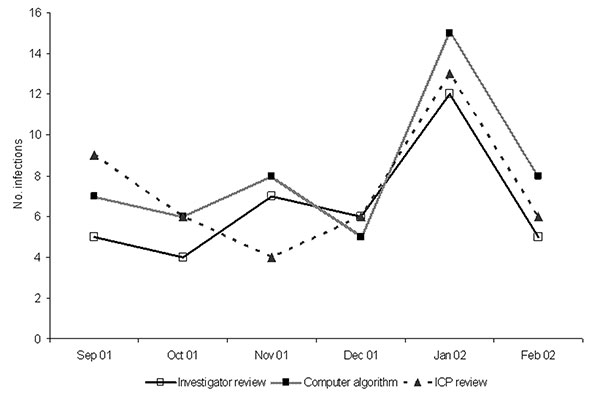Volume 10, Number 9—September 2004
Research
Computer Algorithms To Detect Bloodstream Infections
Figure 3

Figure 3. Display of the monthly number of hospital-acquired, primary, central-venous catheter–associated bloodstream infections (BSIs) determined by separate methods, and correlation of the computer algorithm and infection control professional (ICP) review to the investigator review, Cook County Hospital, Chicago, Illinois. Computer algorithm r = 0.89, p = 0.02; ICP review r = 0.71, p = 0.11.
Page created: March 25, 2011
Page updated: March 25, 2011
Page reviewed: March 25, 2011
The conclusions, findings, and opinions expressed by authors contributing to this journal do not necessarily reflect the official position of the U.S. Department of Health and Human Services, the Public Health Service, the Centers for Disease Control and Prevention, or the authors' affiliated institutions. Use of trade names is for identification only and does not imply endorsement by any of the groups named above.